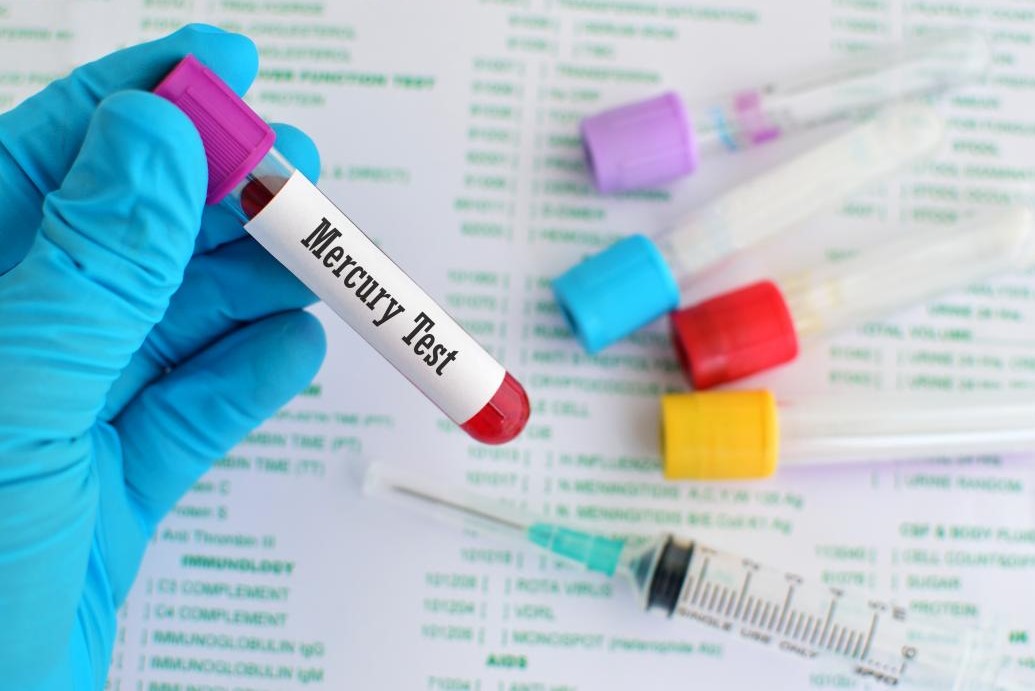
Mercury Poisoning: What You Should Know
Mercury is a heavy metal found in nature and exists in small doses in many household products. Mercury poisoning can occur when someone comes in contact with or ingests too much mercury
In minimal doses, mercury is generally considered safe. However, mercury is a known neurotoxin that can cause many adverse health effects in higher amounts.
The most common form of mercury poisoning occurs from consuming fish and seafood containing high levels of mercury.
Mercury Poisoning: Causes and Symptoms
Mercury is a neurotoxin that can damage nerve tissue in the body and negatively affect nervous system function. There are different types of mercury poisoning with different symptoms.
Methylmercury
One of the most common types of mercury poisoning comes from exposure to methylmercury.
This most commonly occurs when people eat fish or shellfish containing high amounts of methylmercury.2
Symptoms of methylmercury poisoning may include:
- Muscle weakness
- Loss of coordination
- Loss of peripheral vision (side vision)
- Prickling sensation in the hands, feet, or around the mouth
- Impairment of speech or hearing
- Difficulty walking
Metallic Mercury
Another type of mercury poisoning can occur from exposure to vapor from metallic mercury.
This type can occur when metallic mercury breaks or spills and the vapors become exposed to air. Metallic mercury can be found in dental fillings, thermostats, jewelry, and school laboratories.
Breathing in this type of mercury vapor can cause:2
- Tremors
- Emotional changes
- Sleeping difficulties
- Weakness, muscle twitching, or atrophy (loss of muscle tissue)
- Headaches
- Changes in nerve responses
- Poor thinking ability
- Impaired kidney function, respiratory issues, or even death (when at high levels)
Other Types of Mercury
Inorganic mercury can sometimes be found in everyday household products such as fungicides, preservatives, antiseptics, skin-lightening products, and anti-aging products.2
This type of mercury exposure occurs by being absorbed through the gastrointestinal tract and kidneys and may cause:2
- Skin rashes
- Muscle weakness
- Mood swings
- Memory loss
- Mental disturbances
Mercury Poisoning: Effects on Infants and Children
Methylmercury exposure can harm infants in the womb when their mothers consume fish or seafood with high mercury levels.
This exposure can negatively affect brain and nervous system development.
Children who have been exposed to methylmercury before birth have been known to have difficulties with:2
- Cognitive thinking
- Attention
- Language
- Fine motor skills
- Visual-spatial skills
High levels of prenatal mercury poisoning can also cause a form of cerebral palsy, a group of disorders affecting movement, posture, and muscle tone.1
Lower doses during pregnancy are more likely to cause neurodevelopmental or cognitive delays.1
Mercury poisoning symptoms occurring in children after birth may include:
- A pins-and-needles sensation (paresthesias)
- Loss of coordination (ataxia)
- Visual and auditory issues
- Seizures
Diagnosis of Mercury poisoning
Mercury poisoning can be diagnosed with a blood test, urine test, or hair test (for long-term mercury exposure).
You will need to see your healthcare provider, who will likely perform a physical exam, ask about your symptoms, and gather information about your past medical history.
Methylmercury positioning—from eating fish and seafood high in mercery—requires a blood test for diagnosis.
Urine mercury levels do not help determine this type of mercury poisoning.3
Treatment
The first step for treatment requires identifying the source of mercury exposure and removing it.
People with high levels of mercury poisoning in the blood may also be prescribed chelation therapy.
Chelation therapy is a medical procedure that involves using chemicals or medications to remove heavy metals and other substances from the body.
A chelating agent can be injected directly into the bloodstream through an IV (intravenous drip) or given as a pill by mouth.
The chelating agent binds to mercury and other toxins and exits the body through urination.
References:
- Bernhoft RA. Mercury toxicity and treatment: a review of the literature. J Environ Public Health. 2012;2012:460508. doi:10.1155/2012/460508
- U.S. Environmental Protection Agency. Health effects of exposures to mercury.
- Centers for Disease Control and Prevention. Organic mercury.
Read Also:
Emergency Live Even More…Live: Download The New Free App Of Your Newspaper For IOS And Android
FDA Warns On Methanol Contamination Using Hand Sanitizers And Expands The List Of Poisonous Products
Poison Mushroom Poisoning: What To Do? How Does Poisoning Manifest Itself?
Hydrocarbon Poisoning: Symptoms, Diagnosis And Treatment


